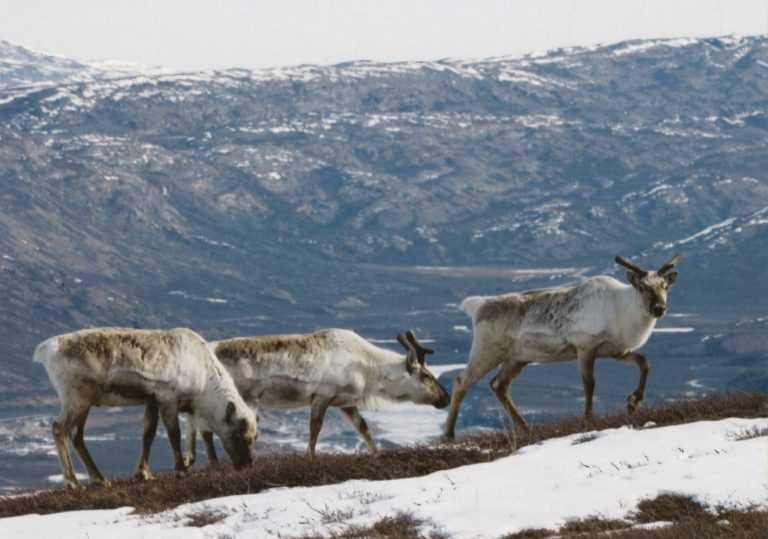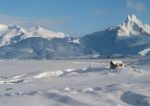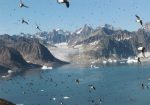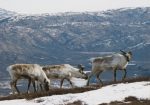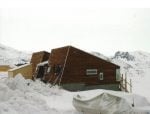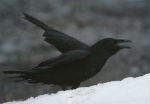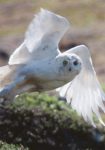Whether with the United Nations, or with Arctic or Nordic collaborators, Greenland’s Home Rule government participates actively in the international dialog on environmental issues
Greenland has joined a number of international conventions related to the environment including the Convention on Biological Diversity and the Ramsar Convention. In accordance with these conventions, Greenland is – amongst other duties – required to ensure sustainable utilization of its fauna and in the case of doubt regarding the population size, to manage the population in accordance with principles of caution.
In order to meet the demands of these conventions, the Greenland Home Rule Government has set several legal actions in motion designed to pursue these international obligations.
An example of federal law related to the protection of the natural environment enacted by the Parliament in December of 2003, is a law requiring sustainable utilization of mammals and birds based on the principle of erring on the side of caution. The law directly states that with regard to protecting mammals and birds efforts must be made to ensure the best possible success for reproduction and the law is amended so that these animals are accorded extra protection during mating season. It also states that this protection must happen with respect for traditional knowledge and living habits.
By passing the Nature Protection Law, Greenland’s Home Rule Government has thus established a number of instruments to protect its mammals and birds. If required the Home Rule Government can protect a species or establish hunting quotas and hunting seasons, prohibit hunting or other activities or even deny access to a particular area during a chosen period, all with the intention of at minimum meeting the demands of the signed conventions.
The open landscape is also better protected since the adoption of the Nature Protection Law. Outside of town and settlement jurisdictions it is now forbidden to build, plant or harvest or otherwise alter the terrain within 100 meters of wetlands, hot springs or rivers just as it is forbidden to build or alter the terrain 100 meters from the coastline along the ocean or fiords. There, where the land meets bodies of water – along rivers and coasts – is precisely where there exists a specially large biological diversity.
In addition, the environmental protection law includes a new principle requiring a “nature impact consequence evaluation” before a larger project can be begun. This could include projects such as cutting large roads or building hydro-electric projects. The nature impact consequence evaluation must describe the impact the project would have on the natural flora and fauna.
The Greenland Home Rule Government has adopted a series of ordinances with the aim of managing the living natural resources in a sustainable way in the light of the caution principle. In this connection the ordinances regarding protection and hunting of white beluga whales and narwhales as well as that of polar bear can be mentioned. These ordinances contain as well the authority to set quotas for the number of animals that may be harvested.
Another example is found in the adoption of a new bird ordinance in 2004. The Parliament was acutely aware at the time of its adoption, that in certain geographic areas along the west coast the flocks of polar auks, eider and king eider ducks were measurably reduced. This recognition was then reflected in the new bird ordinance that, because of the flocks sensitivity that spring hunting – primarily hunting of adult and productive birds – hunting be prohibited in the geographical areas along the west coast where biological expertise indicates the flock’s reduction. Hunting season for auks and eider species takes place along the coast in the Fall until the end of February except in Qaanaaq where the season ends on June 15th.
At the administrative level the Home Rule Government has also taken initiatives to protect the natural environment. Work on developing regulatives for the eleven designated Ramsar areas in Greenland need mentioning. To begin with, regulatives for these areas will be developed for areas where there is the greatest threat to bird colonies.
However, rules and regulations alone are not enough! Greenland’s Home Rule Government has therefore placed importance on establishing a dialog with its people regarding the utilization of its living resources and the environment, including focusing on informing the populace regarding the ordinances in force.
Dialog and an information campaign began in earnest with the successful Tulugaq (Raven) campaign.
The home Rule Government places its weight behind placing the issue of natural resources before its children and youth as well as the local adult population, a program which has resulted in the hiring of a number of environmental consultants in the municipalities from 2005 and on.
Some believe that Greenland’s Home Rule Government has not taken initiatives in the area of environment, but the above mentioned initiatives in fact demonstrate that Greenland takes its international obligations seriously.


